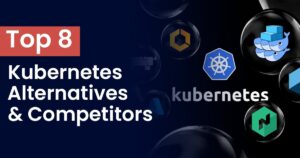
How to prepare for the PL-900 exam
Introduction The Microsoft Power Platform Fundamentals Certification lets you grasp the core concepts and fundamentals required to start on Power Platform. To achieve this certification,
Unlock the Power of FortiGate Mastery with Our Latest Release Fortinet Certified Associate – FortiGate Operator Course. Enroll Now!

Introduction The Microsoft Power Platform Fundamentals Certification lets you grasp the core concepts and fundamentals required to start on Power Platform. To achieve this certification,

Introduction The demand for scalable, reliable, and secure cloud services has never been higher in today’s digital landscape. AWS Global Infrastructure is a beacon of

Introduction The way we manage container orchestration has been entirely transformed by Kubernetes, which has made application deployment, scaling, and management much more accessible. It’s
Table of Contents
Organizations are continually bombarded with new technology and data in today’s digital world. Legacy ecosystems are struggling to keep up with this massive amount of data. Due to the data explosion, businesses are turning to cloud infrastructure as a viable choice. PaaS solutions address modern business needs while lowering the costs and complexity of purchasing, deploying, and administering in-house hardware and software.
Developers that use the Platform-as-a-Service (PaaS) model rent everything they need to build an app from a cloud provider, including development tools, infrastructure, and operating systems. This is one of the three cloud computing service models. This article will discuss PaaS, its components, working, and applications.
If you are interested in beginning your career in Cloud Computing, especially PaaS, IPSpecialist is considered the best place to start your journey. IPSpecialist has a lot of PaaS implementations like AWS Elastic Bean Stalk, Google Compute Engine, Azure, etc.

Platform as a Service (PaaS) is a cloud computing concept in which consumers receive hardware and software tools from a third-party supplier through the internet. These tools are typically required for application development. The hardware and software are hosted on the PaaS provider’s infrastructure. As a result, PaaS eliminates the need for developers to set up in-house gear and software to develop or execute a new application.
The PaaS architecture includes tools that allow businesses to access BPM systems, analyze data, maintain databases, and provide communication capabilities.
Most PaaS products support various programming languages, allowing developers to start building apps immediately without having to worry about security, maintenance, or administration.
Some PaaS examples include:
PaaS may be accessed from any computer with an internet connection, allowing you to create a whole app in your browser. This enables teams that are dispersed throughout the globe to collaborate. It also means that developers have less control over the development environment, albeit at a far lower cost.
Various PaaS companies provide a variety of services. The following is a list of the main features of these services.
The tools engineers require for software development are the most significant platform component as a service. A source code editor, debugger, compiler, and other necessary tools for authoring, deploying, debugging, and managing code are included, and these developmental tools could be given as a package. Vendors supply particular tools according to clients’ demands, but a PaaS model should fundamentally include everything a developer would need to construct an application.
Middleware is a non-visible item (i.e., software) that allows users to communicate with it. It serves as a link between user-facing apps and operating systems for machines. Middleware allows apps to understand what a user is typing or clicking on the mouse.
PaaS provides any or all operating systems that developers need to work with and operating systems on which their applications operate. On the other hand, the developer does not need to worry about using the most recent version of the operating system or updating it for security patches. As a result, PaaS companies must provide an OS as a core component.
PaaS enables developers to create, query, and maintain databases required to develop and deploy applications.
While creating and delivering applications, PaaS takes care of all infrastructure components, including storage and servers. A PaaS provider either maintains or purchases servers, storage, and physical datacenters from a third-party supplier.
PaaS in cloud computing is great for developing software-related products. Unlike other cloud solutions such as IaaS and SaaS, which serve various functions, it is solely a development-oriented cloud computing paradigm that cannot accept non-development processes.
The online interface of PaaS overcomes geographical constraints by providing a development platform with tools and resources that teams can access on the move by logging into the enterprise PaaS system from any Internet-enabled device. The PaaS architecture’s simplicity and flexibility allow enterprises to focus more on business-critical challenges.

PaaS has established itself as a cost-effective and powerful cloud platform for developing, running, and managing applications, and the PaaS market is predicted to grow and expand through 2027. The cloud and PaaS industry, for example, is expected to increase at a compound annual growth rate of 28.8% from 2021 to 2025, according to IDC.
The desire for enterprises to minimize complexity, eliminate local infrastructure, improve cooperation — notably among remote and geographically distributed teams — and streamline application management duties has led to such expectations.
PaaS expansion and growth are fueled by cloud migration and initiatives to develop cloud-first or cloud-native applications and other new cloud technologies like IoT.
By 2027, the importance of iPaaS is predicted to grow significantly as businesses of all sizes strive to update, connect, and exchange data across heterogeneous software systems and deliver unified tools across the business and to their client base.
PaaS allows developers to build applications faster than they could if they had to worry about constructing, configuring, and providing their platforms and backend infrastructure. With PaaS, all they have to do is write code and test the app, and the vendor will handle the rest.
PaaS allows developers to create, test, debug, deploy, host, and update their apps all in the same place. This allows developers to ensure that a web application will work effectively as a hosted application before releasing it and simplifying the application development process.
In many circumstances, PaaS is more cost-effective than using IaaS. PaaS customers save money since they do not have to manage or deploy virtual machines. Furthermore, some vendors provide a pay-as-you-go pricing model, in which the vendor only charges for the computer resources used by the program, saving clients money.
All are licensing for operating systems and development tools, and the PaaS provider handles everything else contained in the PaaS platform.

In PaaS and serverless computing, a developer only has to worry about writing and uploading code while the vendor takes care of the backend. However, the scale differs significantly between the two models. Serverless computing and FaaS programs scale naturally, whereas PaaS apps do not unless they are explicitly designed to. Serverless apps can be up and running almost instantly. In contrast, PaaS applications are more like traditional programs and must be running most of the time to be immediately available to users.
Another distinction is that, unlike PaaS companies, serverless vendors do not provide development tools or frameworks. Pricing distinguishes the two types. PaaS billing is not as precise as serverless computing billing, dividing charges into seconds or fractions of seconds for each function instance.
Fast-paced and highly agile workplaces that can react to real-time events and bring about change quickly are what drive modern organizations. Platform as a service is an excellent example of this. With the help of technological tools and software machinery, businesses may create bespoke apps and solutions. PaaS adoption fundamentally prevents the cartwheel from reinventing and reusing current processes. This means that developers do not have to code everything from the ground up. Instead, customers can plug and play with the PaaS provider’s pre-built reusable blocks. This eventually aids in the creation and deployment of apps more quickly.
PaaS can provide several advantages to a company; nevertheless, cloud migration must be done carefully. Migrating to the cloud entails managing migration while avoiding data loss, operational disruptions, and high-cost models; this is the case. As a result, one must continue with caution and seek assistance as necessary.
© 2022 All rights reserved | Privacy Policy | Terms and Conditions | Sitemap




